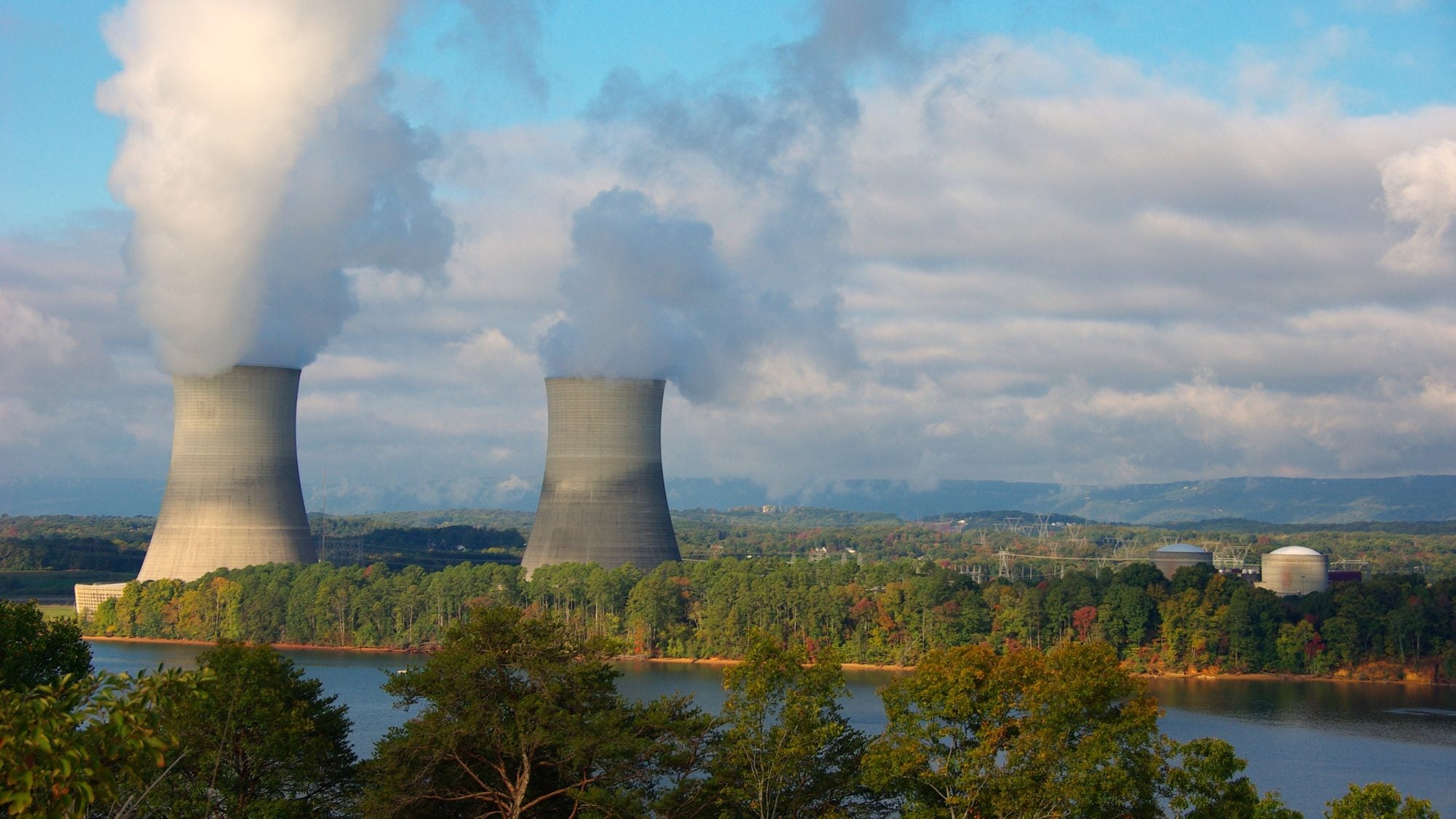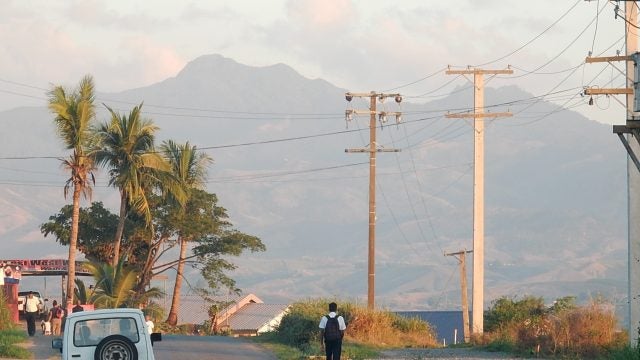
Title: Competitive Advantage as a National Security Objective for US Civilian Nuclear Power Policy
Following World War II (WWII), the United States committed itself to providing global leadership in civilian nuclear power. The ultimate goal behind this initiative was to bolster national security by establishing and maintaining its competitive advantage in nuclear technology vis-à-vis the Soviet Union (USSR). However, this advantage has eroded, now belonging to the United States’ acute threat, Russia, and strategic competitor, China. Advanced nuclear reactors offer an opportunity for the United States to regain its competitiveness in the field, but to optimize it, policymakers must recognize the most urgent value of nuclear power and set the primary objectives of US nuclear power policy to focus on restoring national security and regaining competitive advantage over adversary nations.
Introduction: The United States’ Civilian Nuclear Power Policy Legacy
From the beginning of the Manhattan Project through the early years of the Cold War, the highest levels of the US national security enterprise–including the Office of the President, the US military, the Department of State, the National Security Council, and the US Congress–were deeply involved in the deliberations on atomic energy and nuclear power policy. Having developed the technology for the most devastating military weapon in history, the United States occupied a unique global position with a first-mover advantage in atomic energy. Geopolitically and strategically, it gained a global advantage in nuclear technology and a competitive advantage over the USSR. Policymakers anticipated the dominance would be short-lived, projecting it would last five to ten years. Their prediction was optimistic, as the USSR successfully tested a nuclear device in 1949.
This backdrop created a sense of urgency within the US national security enterprise, reflected in the five principled objectives for US civilian nuclear power policy outlined by the National Security Council in 1955: 1) maintain US leadership in the field, particularly in the development and application of atomic power; 2) use such US leadership to promote cohesion within the free world and to forestall Soviet exploitation of the peaceful uses of atomic energy to attract unaligned nations; 3) increase progress in developing and applying the peaceful uses of atomic energy in free nations abroad; 4) assure continued US access to foreign uranium and thorium supplies; and 5) prevent the diversion to non-peaceful uses of any fissionable materials provided to other countries.
National security concerns extended beyond the USSR’s development of nuclear weapons as an instrument of hard power. The upper echelons of the US government were concerned about the USSR’s latent use of civilian nuclear power as an instrument of soft power to attract the allegiance of uncommitted countries. These principles reflect a deep understanding of the intrinsic national security value that atomic energy and civilian nuclear power hold, transcending that of other energy resources. They also demonstrate the conviction that the United States needed the world’s premier civilian nuclear program to hold a leadership role in controlling atomic energy and nuclear technology.
Policymakers deliberated from the position that they were “not dealing simply with a scientific problem but with a problem in statecraft and the ways of the human spirit” and that their “decisions about the peacetime development of nuclear energy have not, cannot, and probably should not be made on the basis of strict economic realism.” On these policy principles, the United States established itself as the twentieth-century global leader in civilian nuclear power deployment and atomic energy.
Beyond Market Value: National Security as True Comparative Loss of an Eroding US Nuclear Competitive Advantage
While the United States dominated civilian nuclear development in the twentieth century, it no longer occupies those commanding heights. From 1960-1999, 473 nuclear reactors were connected to the grid globally. Of these, the United States accounted for 130, Russia accounted for 33, and China none. Since 2000, China has connected fifty-two reactors to the grid with twenty-three under construction, Russia connected thirteen to the grid with three under construction, and the United States connected three to the grid with no reactors under construction. In this same period, China and Russia have been involved with 114 of the 170 reactors that have been connected to the grid globally. The two US reactors connected to the grid in 2023-24 are the first new US nuclear construction projects in over thirty years. Its competitive advantage—not only in new nuclear construction but also in nuclear partnerships—has eroded and now belongs to China and Russia. This expands beyond reactor quantity and is an issue of diminishing influence in a world looking to develop domestic nuclear power programs.
The current nuclear power conversation in the United States is entangled in a comprehensive debate over America’s energy future, particularly as it pertains to energy security, climate change, and the proposed US energy transition away from fossil fuels. Consequently, nuclear power is being viewed in two ways. In some circles, it is seen in the same light as other market commodities such as coal, natural gas, solar, and wind, while in others, it’s being championed as a key tool for battling climate change. In either case, however, nuclear power has limitations: it is a long-term investment that struggles to compete with natural gas and subsidized renewables on a short-term economic basis as well as on a carbon-reduction basis, as there’s contention that renewables can substitute entirely for nuclear power.
Therefore, the true comparative value of nuclear power can only be seen through a long-term lens with a national security perspective. While the reliability and low-carbon benefits of nuclear can be realized in the short term, the relative economic benefits may not be realized for years, as the sixty-plus-year operational life of a nuclear reactor is two to three times that of other technologies. Excessive focus on market and climate perspectives risks dismissing the national security imperative of competitive advantage. Neither perspective adequately addresses the challenge posed by great power rivals, who are leveraging nuclear power to meet their geopolitical objective of marginalizing US strategic influence abroad.
Challenges and Opportunities in the 21st Century
While the United States lags behind China and Russia in the construction and deployment of conventional nuclear reactors, advanced reactors such as small modulars, fast breeders, molten salt reactors, and microreactors offer opportunities to restore competitiveness. The United States is taking some steps in this direction through the Advanced Reactor Demonstration Project and the Department of Defense’s Project Pele.
The technological benefits of advanced reactors include higher efficiencies, modular construction, advanced fuels, and design characteristics that provide walk-away passive safety in the event of a loss-of-coolant accident. However, revolutionary innovations will create challenges for the United States, including reaching full production scale at an affordable price point. China and Russia, operating from a state capitalism structure that fuses technological innovation into geopolitical strategy, do not face this challenge, giving them a potential advantage for achieving first-mover status. The United States can take measures to counter this. First, the United States should conduct a nuclear industrial base review to evaluate the domestic capacity to establish an advanced reactor enterprise. This should include a full-scale assessment of the domestic and global supply chain and collaboration with allied partners. Second, leveraging military installations and data centers can create a demand signal that allows the United States to move down the construction cost curve and up the production curve, thereby reducing the financial risk for the United States electric power sector to enter the advanced reactor market. Gattie and Hewitt offer an extended analysis and framework that suggests leveraging private capital with an appropriate level of federal support, which is a reasonable expectation considering the national security significance.
However, the geopolitical landscape of the twenty-first century has been and continues to be recontoured. Advanced reactor technology on its own will not readily build influence as did conventional US nuclear in the twentieth century when the United States was the dominant and preferred nuclear partner. While the choice between the United States and the USSR in the twentieth century was widely seen as a competition of ideologies, today’s emerging economies forge partnerships based on pragmatic grounds of economic reality.
Although Russia constitutes an immediate and acute threat to the United States, it remains the global leader in nuclear exports, even after invading Ukraine. China has established its own brand of socialism with Chinese characteristics on a foundation of state-owned enterprises (SOE), military-civil fusion strategy, party-state capitalism, and its Belt and Road Initiative that offers “a new option for other states aiming to speed up their development while preserving independence.” While the United States is considering a transition away from fossil fuels and trying to regain traction in civilian nuclear, Russia and China are already offering options to emerging economies. They are exporting nuclear technology through their respective SOEs, which function as vertically integrated corporations backed by state treasuries. Unlike prioritizing profits, both countries have internalized the national security value of nuclear power for maintaining technological dominance and gaining a competitive advantage over the United States.
In response, the US energy and nuclear debate needs high-level candor from the national security enterprise articulating two critical points: 1) the national security value of civilian nuclear technology and the importance of advanced reactors; and 2) the global implications of China and Russia having a competitive advantage in civilian nuclear construction and dominance in global nuclear exports. This will require distinguishing nuclear power as a unique energy technology and separating it from the national discussion where top-down climate policies may prioritize renewables, or bottom-up market principles may prioritize lowest marginal cost. Neither of these approaches are selected based on national security principles and therefore cannot recognize the inherent importance of civilian nuclear programs.
Conclusion
In 1956, H.D. Smyth, the author of the official report on the United States’ development of Atomic Energy for Military Purposes, posed two challenging questions: “Are the aims of our foreign policy consistent with the aims of our domestic policy as far as nuclear power is concerned?” and “How can we offer to build reactors abroad without building enough reactors here to know what we are doing?” These questions remain pertinent today and can be rephrased as follows: Does the United States still value nuclear power as a national security priority on its own merit? And is the United States still obligated to pursue and maintain a competitive advantage in civilian nuclear over its great power rivals?
There appears to be an ideological gap between today’s deliberation on US nuclear power policy and that of early policymakers. Advanced reactor technology offers an opportunity for the United States to bridge the gap, but it will require more than technology. It requires a comprehensive nuclear policy strategy commensurate with challenges in the twenty-first century and aligned with original policy principles prioritizing US competitive advantage.
. . .
David Gattie is an Associate Professor of Engineering at the University of Georgia’s (UGA) College of Engineering, and a Senior Fellow at UGA’s Center for International Trade and Security, where he provides leadership for the Energy Security Track of the Master of International Policy program. He has provided testimony on energy, climate, and nuclear power policy before the US House Energy and Commerce Committee. Email: dgattie@uga.edu
Image Credit: Wikimedia Commons
Recommended Articles

Export controls on AI components have become central tools in great-power technology competition, though their full potential has yet to be realized. To maintain a competitive position in…

The Trump administration should prioritize biotechnology as a strategic asset for the United States using the military strategy framework of “ends, ways, and means” because biotechnology supports critical national objectives…

Fiji, a Pacific Small Island Developing State (PSIDS), faces rural electrification challenges due to its dispersed geography and climate vulnerabilities. With 6 percent of Fijian rural households lacking…